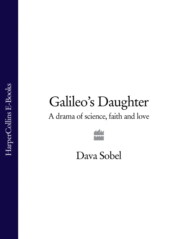По всем вопросам обращайтесь на: info@litportal.ru
(©) 2003-2024.
✖
Longitude
Настройки чтения
Размер шрифта
Высота строк
Поля
Huygens, also a gifted astronomer, had divined that the “moons” Galileo observed at Saturn were really a ring, impossible as that seemed at the time. Huygens also discovered Saturn’s largest moon, which he named Titan, and was the first to notice markings on Mars. But Huygens couldn’t be tied to the telescope all the time. He had too many other things on his mind. It is even said that he chided Cassini, his boss at the Paris Observatory, for the director’s slavish devotion to daily observing.
Huygens, best known as the first great horologist, swore he arrived at the idea for the pendulum clock independently of Galileo. And indeed he evinced a deeper understanding of the physics of pendulum swings—and the problem of keeping them going at a constant rate—when he built his first pendulum-regulated clock in 1656. Two years later Huygens published a treatise on its principles, called the Horologium, in which he declared his clock a fit instrument for establishing longitude at sea.
By 1660, Huygens had completed not one but two marine timekeepers based on his principles. He tested them carefully over the next several years, sending them off with cooperative sea captains. On the third such trial, in 1664, Huygens’s clocks sailed to the Cape Verde Islands, in the North Atlantic off the west coast of Africa, and kept good track of the ship’s longitude all the way there and back.
Now a recognized authority on the subject, Huygens published another book in 1665, the Kort Onderwys, his directions for the use of marine timekeepers. Subsequent voyages, however, exposed a certain finickiness in these machines. They seemed to require favorable weather to perform faithfully. The swaying of the ship on a storm’s waves confounded the normal swinging of the pendulum.
To circumvent this problem, Huygens invented the spiral balance spring as an alternative to the pendulum for setting a clock’s rate, and had it patented in France in 1675. Once again, Huygens found himself under pressure to prove himself the inventor of a new advance in timekeeping, when he met a hot-blooded and headstrong competitor in the person of Robert Hooke.
Hooke had already made several memorable names for himself in science. As a biologist studying the microscopic structure of insect parts, bird feathers, and fish scales, he applied the word cell to describe the tiny chambers he discerned in living forms. Hooke was also a surveyor and builder who helped reconstruct the city of London after the great fire of 1666. As a physicist, Hooke had his hand in fathoming the behavior of light, the theory of gravity, the feasibility of steam engines, the cause of earthquakes, and the action of springs. Here, in the coiled contrivance of the balance spring, Hooke clashed with Huygens, claiming the Dutchman had stolen his concept.
The Hooke-Huygens conflict over the right to an English patent for the spiral balance spring disrupted several meetings of the Royal Society, and eventually the matter was dropped from the minutes, without being decided to either contestant’s satisfaction.
In the end, there was no end to the strife, though neither Hooke nor Huygens produced a true marine timekeeper. The separate failures of these two giants seemed to dampen the prospects for ever solving the longitude problem with a clock. Disdainful astronomers, still struggling to amass the necessary data required to employ their lunar distance technique, leaped at the chance to renounce the timekeeper approach. As far as they could see, the answer would come from the heavens—from the clockwork universe and not from any ordinary clock.
5. Powder of Sympathy (#ulink_1a1ac3f8-8232-5002-9dbd-db2311c2f202)
The College will the whole world measure;
Which most impossible conclude,
And Navigation make a pleasure
By finding out the Longitude.
Every Tarpaulin shall then with ease
Sayle any ship to the Antipodes.
—ANONYMOUS (ABOUT 1660) “Ballad of Gresham College”
At the end of the seventeenth century, even as members of learned societies debated the means to a longitude solution, countless cranks and opportunists published pamphlets to promulgate their own hare-brained schemes for finding longitude at sea.
Surely the most colorful of the offbeat approaches was the wounded dog theory, put forth in 1687. It was predicated on a quack cure called powder of sympathy. This miraculous powder, discovered in southern France by the dashing Sir Kenelm Digby, could purportedly heal at a distance. All one had to do to unleash its magic was to apply it to an article from the ailing person. A bit of bandage from a wound, for example, when sprinkled with powder of sympathy, would hasten the closing of that wound. Unfortunately, the cure was not painless, and Sir Kenelm was rumored to have made his patients jump by powdering—for medicinal purposes—the knives that had cut them, or by dipping their dressings into a solution of the powder.
The daft idea to apply Digby’s powder to the longitude problem follows naturally enough to the prepared mind: Send aboard a wounded dog as a ship sets sail. Leave ashore a trusted individual to dip the dog’s bandage into the sympathy solution every day at noon. The dog would perforce yelp in reaction, and thereby provide the captain a time cue. The dog’s cry would mean, “the Sun is upon the Meridian in London.” The captain could then compare that hour to the local time on ship and figure the longitude accordingly. One had to hope, of course, that the powder really held the power to be felt many thousand leagues over the sea, and yet—and this is very important—fail to heal the telltale wound over the course of several months. (Some historians suggest that the dog might have had to be injured more than once on a major voyage.)
Whether this longitude solution was intended as science or satire, the author points out that submitting “a Dog to the misery of having always a Wound about him” is no more macabre or mercenary than expecting a seaman to put out his own eye for the purposes of navigation. “[B]efore the Back-Quadrants were Invented,” the pamphlet states, “when the Forestaff was most in use, there was not one Old Master of a Ship amongst Twenty, but what a Blind in one Eye by daily staring in the Sun to find his Way.” This was true enough. When English navigator and explorer John Davis introduced the backstaff in 1595, sailors immediately hailed it as a great improvement over the old cross-staff, or Jacob’s staff. The original sighting sticks had required them to measure the height of the sun above the horizon by looking directly into its glare, with only scant eye protection afforded by the darkened bits of glass on the instruments’ sighting holes. A few years of such observations were enough to destroy anyone’s eyesight. Yet the observations had to be made. And after all those early navigators lost at least half their vision finding the latitude, who would wince at wounding a few wretched dogs in the quest for longitude?
Вы ознакомились с фрагментом книги.
Приобретайте полный текст книги у нашего партнера:
Приобретайте полный текст книги у нашего партнера:







